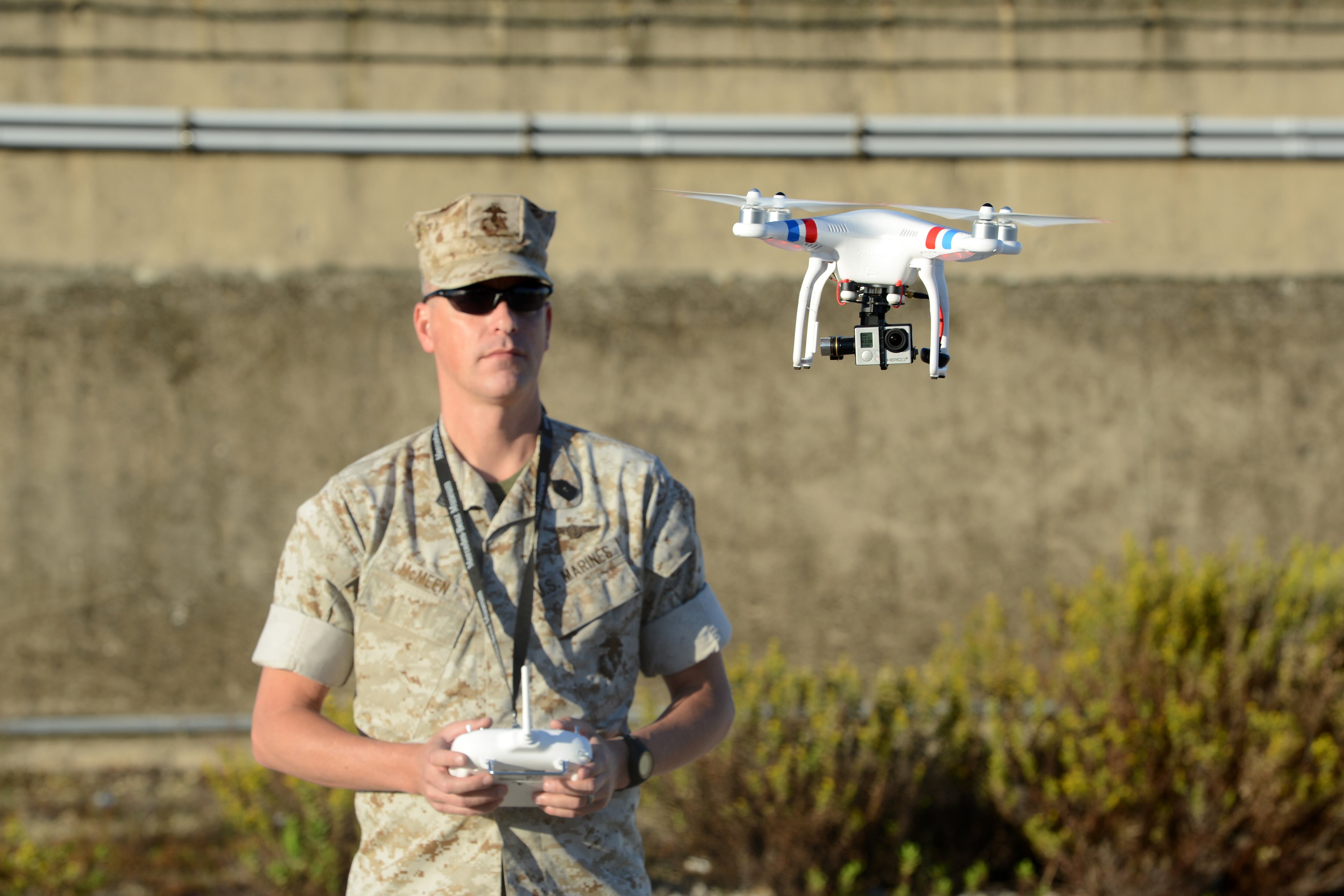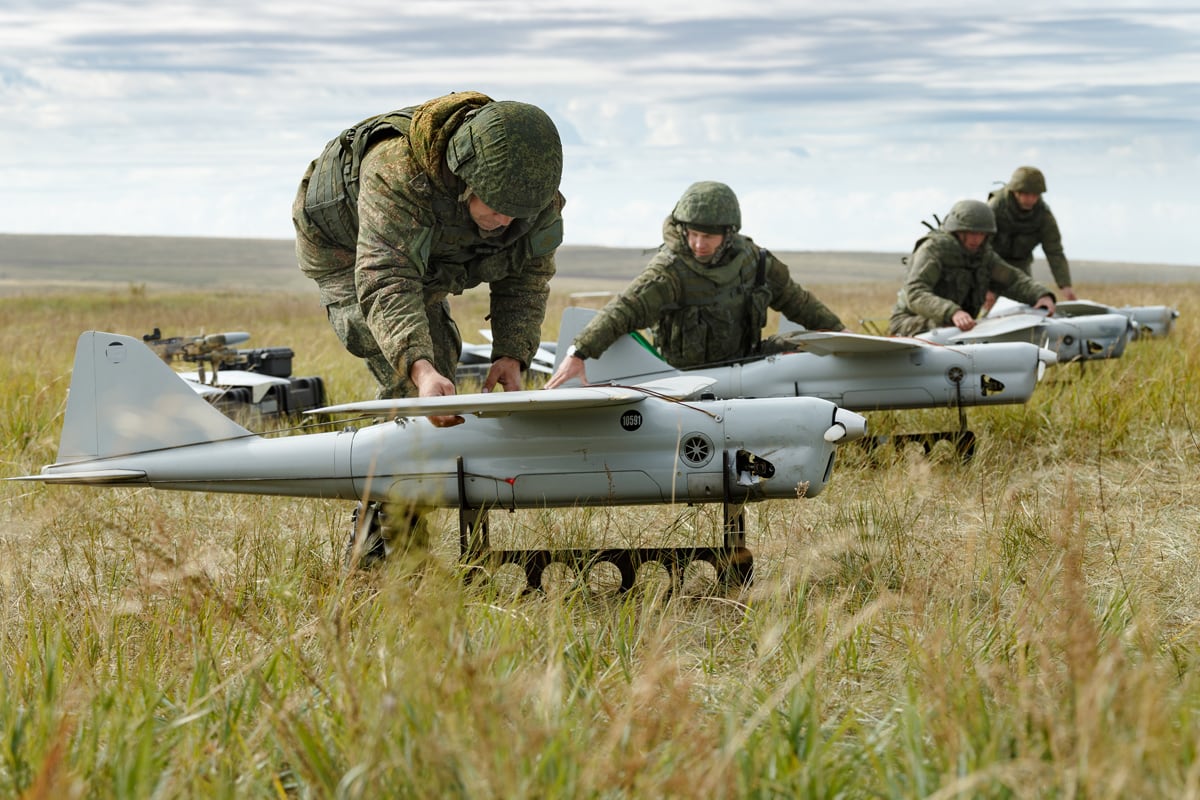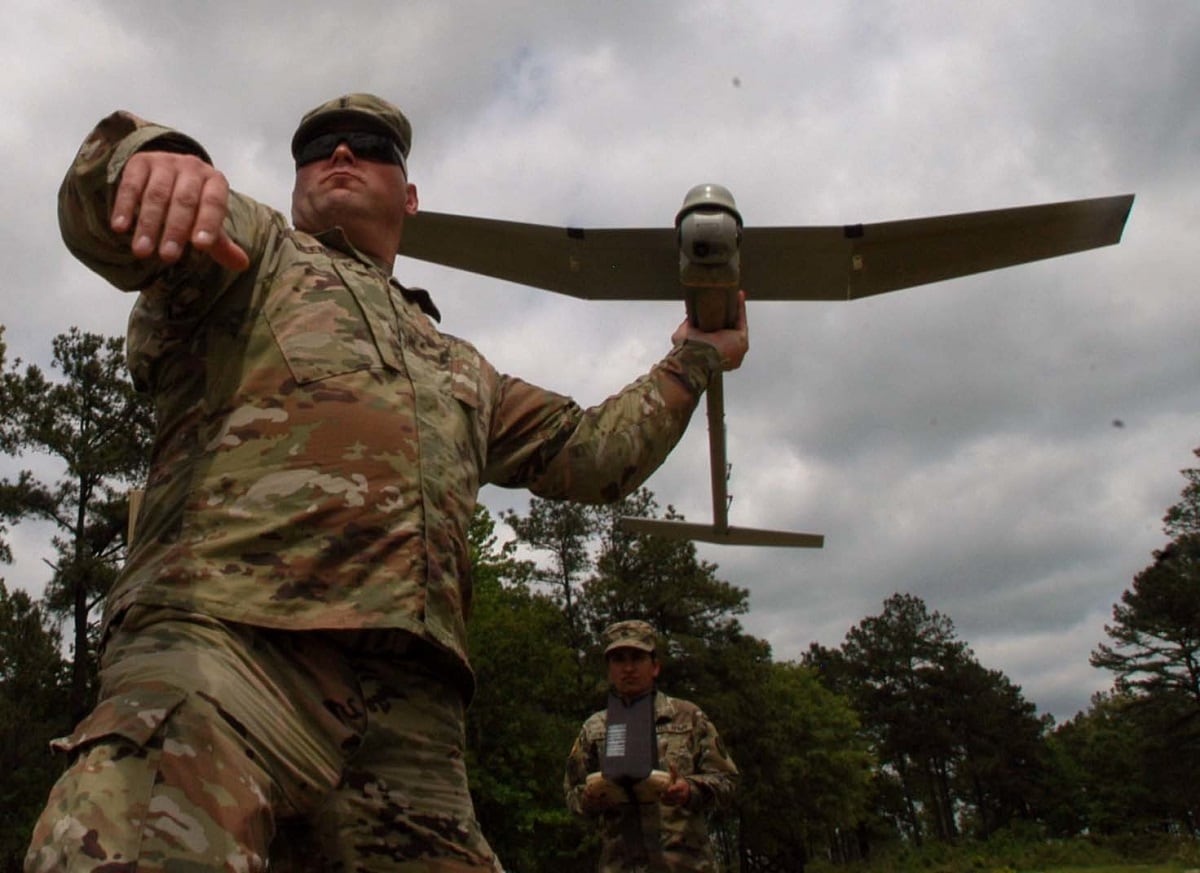WASHINGTON — In August 2014, well-directed artillery fire was used to devastating effect in Ukraine, leaving three mechanized battalions a smoking ruin. Because the units and their positions were identified by a mini-drone, the Ukrainian government lost 200 vehicles, and very-short-range air defenses weren’t even able to locate it.
Today, UAVs have grown from a niche intelligence, surveillance and reconnaissance capability to “a favored tool of the non-state actor, initially for ISR, but increasingly for weapons delivery,” according to a newly released assessment of military capabilities and defense economics by the International Institute for Strategic Studies.
While much has been made of emerging hypersonic weapons, “uninhabited aerial vehicles” of all classes are another key modern air-defense challenge, according to IISS, alongside other traditional targets and “novel threats,” like combat aircraft with a reduced radar-signature, precision-guided munitions and land-attack cruise missiles.
“The U.S. military and any military has to prepare for an operating environment in which enemy drones are not just occasional, but omnipresent,” said Dan Gettinger, co-director of the Center for the Study of the Drone at Bard College. “Whether it’s a small, tactical UAS, midsize or strategic, drones of any size will be commonplace on the battlefield of the future.”
RELATED

The militant group Hezbollah began to use ISR drones in 2004 and “adapted commercially available hobbyist systems for combat roles,” including the Chinese-made Skywalker, the Talon and the Phantom quadcopter, IISS noted. The three systems are available for purchase on the internet and range in price from $200 to $700.
“The cameras available on these types of UAVs have a clear ISR utility,” IISS wrote. “They have been used for purposes including to correct indirect-fire attacks and to support the guidance of vehicle-mounted improvised explosive devices to their intended targets, as well as in direct offensive operations such as the alleged assassination plot on Venezuelan President Nicolàs Maduro in August 2018."
While it’s unclear exactly what happened in Venezuela on Aug. 4, 2018, the government claimed an attempt had been made to assassinate Maduro during a speech using two small drones laden with C4 plastic explosive. Open-source investigators at Bellingcat identified the platform as the DJI Matrice 600, a hexcopter available on Amazon for $5,000.
Beyond a one-off assassination attempt, the Islamic State group was first reported using small UAVs in 2014, and then in scattered reports afterward.
In October 2016, an ISIS drone — a Chinese-made Skywalker X8 — landed near a peshmerga post in the Mosul Dam area in Kurdistan, northern Iraq, and later exploded, killing two peshmerga troops and wounding two French paratroopers.
The fixed delta-wing Skywalker X8 weighed 2.2 kilograms, had a payload capacity of 2.3 kilograms and would have cost $1,500 if outfitted with flying and camera equipment. In other words, the cost is low. But then again, so is the payload.
“This limited payload-capacity — together with challenges in accurately directing such systems onto their target — restricts their effectiveness, although for the non-state actor the propaganda value of an attack may be considerably greater than any physical damage or casualties,” IISS noted.
RELATED

Russian drone operators in eastern Ukraine, on the other hand, gained experience on platforms later seen in Syria, according to the think tank. Those include the Orlan-10, Takhion and Eleron-3 small UAVs as well as the larger Forpost (that’s Russia name for the Israeli Searcher II).
On the flip side, Russia says its air defense assets in Syria have downed 45 drones targeting its main base in the country, according to the IISS report.
“The Russians have really learned their lessons from the attacks in Syria,” Gettinger said. “They’re engaging in exercises aimed at counter-UAS, which shows they’re taking the threat seriously. ... It was a real wake-up call to them that they were vulnerable to seemingly homemade drones."
How to defeat them? One novel, low-tech approach comes from the Dutch national police, who were experimenting a few years ago with using raptor eagles to target undesirable drones.
The U.S. Army has experimented with nets packed into shotgun shells that can fell a flying drone. But, Gettinger noted, that’s a solution for small units and doesn’t provide protection for entire installations.
Another challenge for troops is telling apart friendly drones from unfriendly ones on a congested battlefield.
“Recognizing the threat is half the battle,” Gettinger said.
Beyond low-tech solutions, there is a booming, high-tech market to counter small, ever-cheaper commercial drones. Indeed, Forbes speculated recently: “If 2018 was the year of the drone, 2019 could be the year of the anti-drone.”
RELATED

A survey by the Center for the Study of the Drone published in April found 235 products were sold to detect, mitigate, track and stop drones, reported Defense News sister publication C4ISRNET.
These technologies range from audio and visual sensors that can scan the sky for drones, to interdiction machines, net guns, lasers and electronic warfare jamming capabilities. Players in this field include the companies Dedrone, DJI, DroneShield, Rafael, Leonardo and Fortem.
Driven by a global increase in the use of mini-drones by terrorists and criminals, the anti-drone market is expected to grow to $1.85 billion by 2024, according to the San Francisco-based market research firm Grand View Research.
“As drones become deadlier, stealthier, faster, agile, smaller, sleeker, and cheaper, the nuisance and threat posed by them is expected to go up manifold at various levels, ranging from national security to individual privacy,” Grand View said. “Keeping the above-mentioned threat in mind, there are significant effort, both in terms of money and time, being invested in the development and manufacturing of anti-drone technologies.
“Thus, it is just a matter of time before redundant and reliable methods of detecting and disrupting drones become widely available and mainstream.”
Joe Gould was the senior Pentagon reporter for Defense News, covering the intersection of national security policy, politics and the defense industry. He had previously served as Congress reporter.








